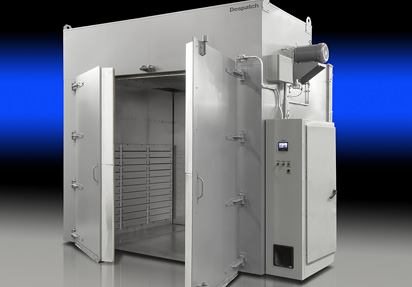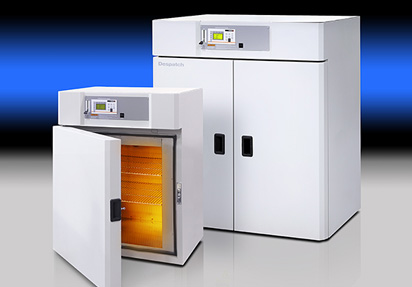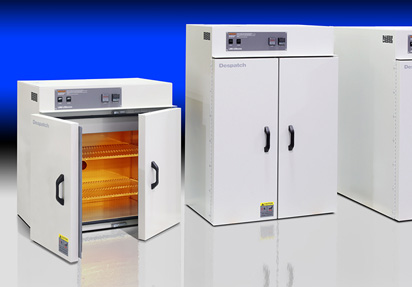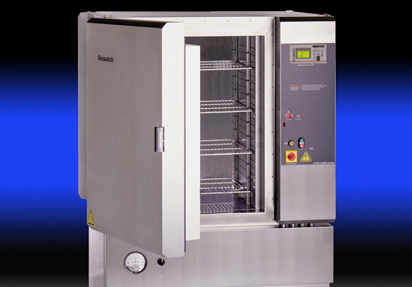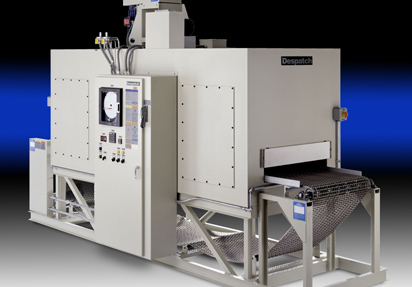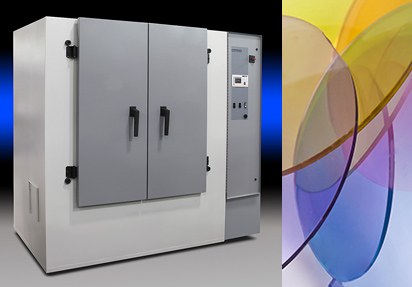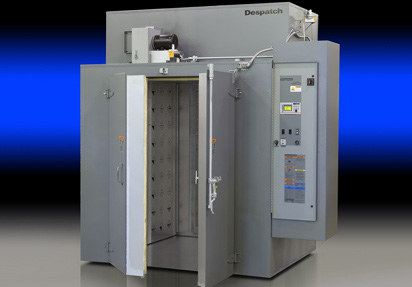HIGH-PERFORMANCE INDUSTRIAL DRYING OVENS
Drying ovens are used across a range of industries and research laboratories for simple applications, such as drying and sterilizing glassware, to complex processes that require controlled heating and temperature uniformity such as bonding and curing.
Drying ovens generally operate from ambient heat to 538°C (1000°F.) Drying ovens may be designed for batch processing or with a conveyor for continuous processing. Despatch Industries builds high performance drying ovens of multiple sizes, processing requirements and temperature capabilities to meet and exceed clients’ laboratory and production applications.
Despatch offers options for drying ovens that include HEPA filtration, inert atmosphere and Class A clean process capabilities. All drying ovens feature programmable controls and stainless steel interiors to prevent corrosion.
When selecting the right drying oven, critical factors to consider are the heat-up, soak and cool-down times required within your application.
Heat-up rates
A drying oven should have the capability to heat the part or material to the desired temperature within a specific time. Even if the oven’s heating capability is sufficient, there are other factors that are just as important:
- Thermal conductivity of the material
- Size and shape of the material
- Velocity and direction that the convected air impacts the material’s surface
Soak Times
Soak time is the amount of time that the material requires once it reaches the desired temperature for the desired length of time. For applications that require precise temperature controls, Despatch Industries offers drying ovens with programmable controls that do not start timing the soak cycle until a set point temperature, either within the product or within the oven chamber, has been reached.
Cool-down Times
Cool down is achieved when the heated air is exhausted out from the drying oven, replaced by cooler, ambient air. Programmable controls c

